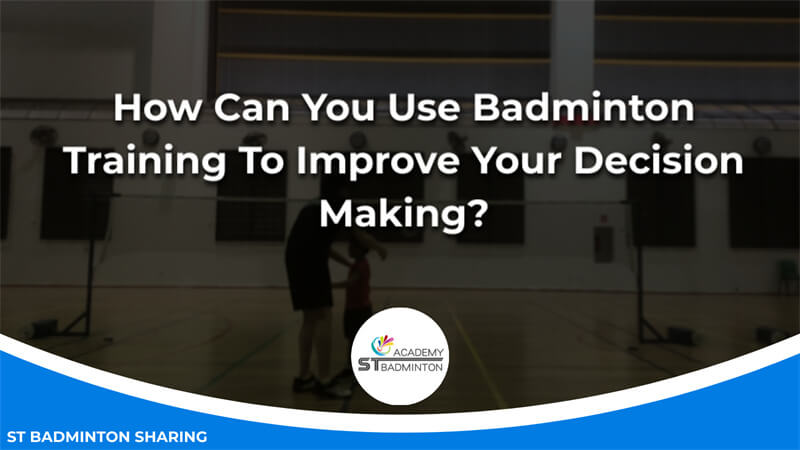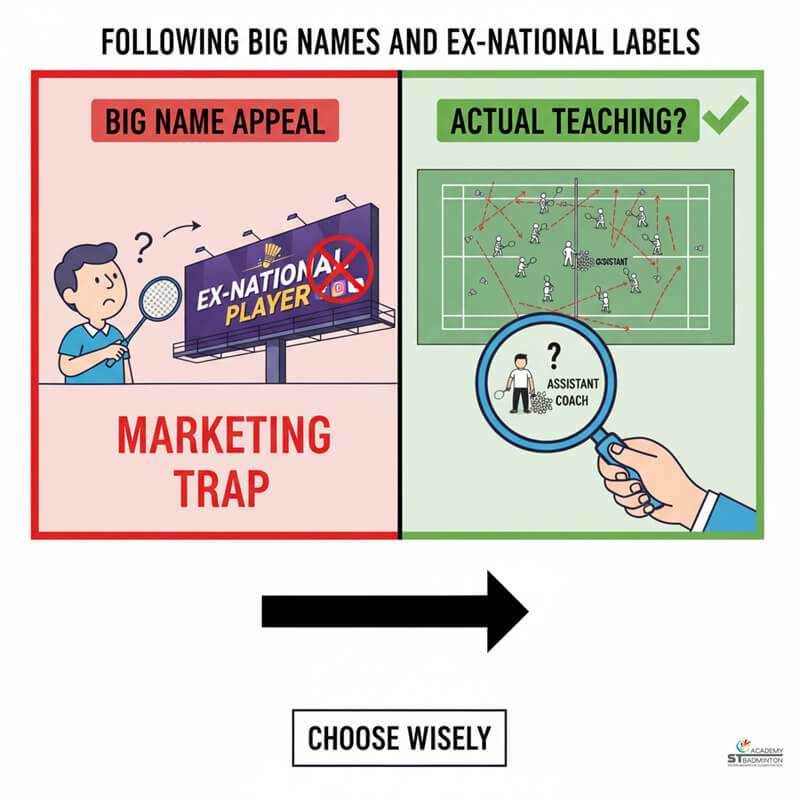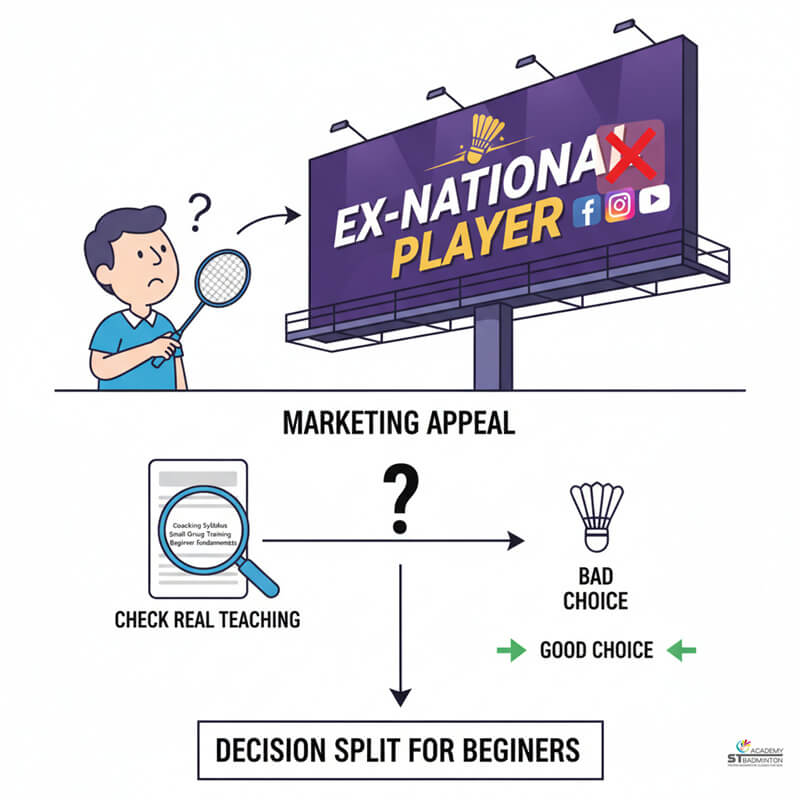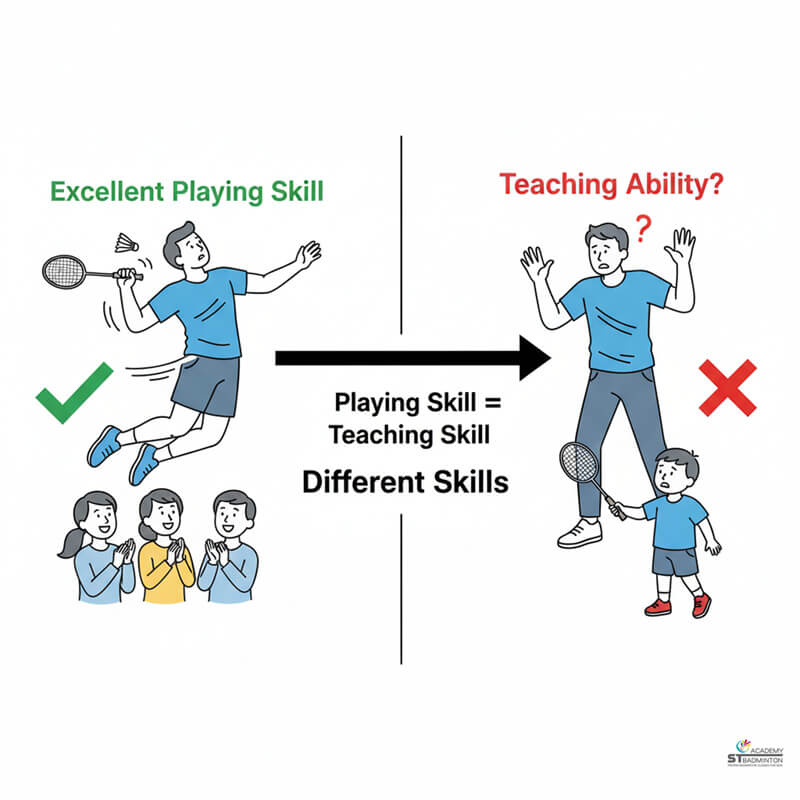Welcome to ST Badminton Academy’s badminton training in Malaysia! I’ve seen first-hand how honing your skills on the court can help you make better decisions in life. Badminton is a fast-paced sport that requires quick responses to ever-changing scenarios, which is why it’s so important for players to hone their reaction times. With proper strategy and practice, badminton athletes can develop strong decision-making abilities which will benefit them off the court as well. In this article, I’ll explain how you can use badminton training to improve your decision-making skills both on and off the court.
Badminton is more than just a fun pastime – it has many benefits for those who take part in its rigorous training regime. Not only does playing badminton encourage physical fitness, but also teaches key elements of mental agility such as split-second reactions and calculated risk-taking. Through developing these skills in badminton, players are able to sharpen their judgment while they’re out there competing against opponents. By thinking strategically during matches, one can learn strategies that will enable them to think quickly under pressure when faced with tough situations outside of the arena too!
Developing Quick Decision Making
Badminton training can be an incredibly powerful tool to improve your decision-making skills! Take it from me, a badminton training and decision-making expert. With the right techniques and strategies, you can drastically boost your ability to make smart decisions in no time.
One of the most important things for successful decision-making is anticipating moves beforehand. This means being able to read cues from your opponent’s body language and using that information to anticipate their next move.
By learning how to correctly interpret these subtle signs, you’ll start seeing patterns emerge which will help you become more efficient at predicting what they’re going to do next. With this knowledge, you can confidently take action before they even have a chance to react.
Using regular badminton practice sessions as part of your routine also helps build up muscle memory so that when faced with unexpected situations during actual games, you’ll know exactly how to react almost instinctively.
This allows you to think on your feet and take quick action without having to stop and think about it too much – giving you the edge against slower opponents who may hesitate or second guess themselves in such moments. Transitioning now into improving reaction times…
Improving Reaction Times
Badminton training can be used to dramatically improve your decision-making skills. One way is by improving reaction time – being able to anticipate and react quickly to shots from opponents.
| Here are four ways I use badminton training to sharpen my reflexes: |
|---|
| – Visualize the court position of each shot: |
| – Visualize not only the position of each shot you make but also anticipate the position of your opponent’s shot. |
| – Pay attention to body language cues from your opponent: |
| – Observe body language cues from your opponent to predict their next move and adjust your strategy accordingly. |
| – Focus on anticipating where your opponent will hit the shuttlecock: |
| – Concentrate on predicting the trajectory of your opponent’s shot, enabling you to react more effectively. |
| – React immediately with a countermove when needed: |
| – Develop the ability to react swiftly with a countermove when necessary, based on your anticipation of your opponent’s actions. |
| These techniques require intense concentration during a match but are key elements in successfully outmaneuvering an opponent and winning points. With practice, you’ll not only shorten your response times but also become more aware of how opponents might respond to different strategies or moves you make. This understanding allows for smarter decisions and greater success in both offensive and defensive playstyles. By honing these skills through regular badminton training, players can develop strong decision-making capabilities which benefit them in any competitive environment. |
Understanding The Opponent’s Strategy
Playing badminton is not just about having quick reflexes, it’s also about making smart decisions. According to a study conducted by the American Sports Institute for Elite Athletes (ASIEA), more than 70% of all badminton shots are determined before the ball is served. This means that decision-making skills can be an important factor in winning a match.
In order to make smarter choices during a game of badminton, players must understand their opponent’s strategy and anticipate their next move. To do this, one must be able to forecast tactics and outsmart the opposing player. Here’s how you can achieve this:
| Action | Result | Benefit |
|---|---|---|
| Observe your opponent closely | Identify their strengths & weaknesses | Develop strategies accordingly |
| Analyze patterns | Recognize playing techniques | Anticipate moves easily |
| Predict shot placement | Read where they will hit | Position yourself advantageously |
By learning to observe an opponent carefully and analyze patterns in their playstyle, players can develop strategies tailored to their opponent’s strengths and weaknesses while being able to anticipate moves ahead of time.
Even better, they’ll be able to predict where the other person will aim the shuttlecock and position themselves accordingly for maximum benefit. Taking calculated risks like these is key when it comes to improving your decision-making capabilities on the court. With enough practice, one can refine their technique until it becomes second nature – allowing them to make quicker decisions with confidence during matches.
Learning To Take Calculated Risks
Badminton training can be a great way to improve decision-making skills. It helps us learn how to take calculated risks and look at the bigger picture rather than just focusing on one shot or move. By analyzing all of the possible outcomes and visualizing shots, we are better able to anticipate our opponents’ moves and prepare for any situation that may arise during a game.
To become an effective badminton player who excels in decision-making, it is essential to think ahead strategically. This means considering potential scenarios before they occur — not just taking what comes your way but also looking at opportunities where you can gain an advantage over your opponent. Here are some tips on how to approach this:
| Analyzing Risks: |
|---|
| – Take time to consider the various possibilities: |
| – Analyze the potential outcomes based on the current play style and strategy of both yourself and your opponent. Evaluate strategies that increase your chances of success while minimizing risks. |
| Visualizing Shots: |
| – Imagine different angles for each shot: |
| – Visualize various angles for each shot, whether directed toward your opponent’s court or another area to apply pressure. This mental rehearsal helps you instinctively know the right move when faced with similar situations during a match, reducing the need for extensive deliberation. |
By combining strategic thinking with careful analysis of risks and visualization techniques, badminton training can help players make quicker and more informed decisions on the court. This allows them to outmaneuver their opponents and come out victorious more often than not! With practice, anyone can master the art of decision-making through badminton training. To develop even further tactical awareness, one should strive for a deeper understanding of strategic thinking…
Strategic Thinking
The art of decision-making has long been associated with badminton. As a sport, it requires one to quickly assess the situation and make strategic choices that can lead to success on the court. In this way, badminton training can help you hone your skills in making decisions in other areas of life as well.
| Table 1 below outlines how badminton training helps develop discipline and mental agility; two important traits for successful decision-making. | Developing Discipline | Mental Agility |
|---|---|---|
| Strictly following rules & regulations | Adapting to varying circumstances | |
| Respecting opponents & teammates | Making quick assessments | |
| Pushing yourself beyond what is comfortable | Thinking strategically about each move |
By committing yourself to consistently practicing and executing these principles, you’ll be able to build up an understanding of how decisions are made and gain confidence in being able to take calculated risks when needed. Moreover, focusing on staying present during matches – paying attention only to what needs your immediate attention – will help you concentrate on the present moment while also preparing you for future scenarios where similar situations may arise. This type of thinking leads us directly into our next section which covers ‘Strategic Thinking’.
Concentrating On The Present Moment
Focusing on the present moment is a key component of badminton training that can help improve decision-making. By becoming mindful of the present moment and recognizing distractions, you can refocus and perform better.
I always advise my students to be aware of their surroundings and hone in on the task at hand. This helps them to avoid being distracted from their goal. Being in the present moment allows us to identify our strengths and weaknesses, allowing us to make better decisions. With practice, you can harness the power of focusing on the present moment to help you excel in badminton and decision-making.
Focusing On The Present Moment
When it comes to badminton training and improving decision-making, focusing on the present moment is key. As a badminton trainer I’m here to tell you that by concentrating on what’s happening right now instead of getting caught up in worrying about the future or ruminating over the past, we can achieve mental clarity and physical endurance. This will enable us to make better decisions while playing as well as help us stay engaged in our daily activities more fully.
In order to do this, it’s important to practice being mindful during your badminton sessions. Make sure to focus on each step of your game: serve, rally, return – rather than jumping ahead or dwelling on mistakes from earlier points. Also, be aware of how your body feels when you play; tightness in your arms? A heavy feeling in your legs? It’s all valuable information for refining techniques and honing decision-making skills.
By staying focused on the present moment throughout training, not only will our concentration increase but so too will our ability to assess situations quickly and accurately – essential for successful execution of shots during games! So remember, don’t let yourself get distracted by anxiety about future outcomes or regretting past decisions – stay rooted in the now and reap the rewards!
Becoming Mindful Of The Present Moment
Becoming mindful of the present moment is a key part of mastering mindfulness and harnessing intuition when playing badminton. By maintaining focus on what’s happening at each point, we can make informed decisions about how to best play out a sequence or respond to our opponent.
I’m here to tell you that if you stay rooted in the now, it’ll give you an edge over your opponents as well as help improve your decision-making skills during training sessions. You won’t be distracted by worries about future outcomes or regretting past mistakes – instead, you’ll be able to better assess situations quickly and accurately for the successful execution of shots! So don’t forget: concentrate on the present moment while playing badminton and watch your game blossom!
Identifying Distractions And Refocusing
It’s easy to become distracted while playing badminton, whether by our own thoughts or external factors such as spectators in the stands. It can be difficult to stay focused on the present moment and that’s why it’s important to identify distractions and refocus quickly. Staying organized is key.
I like to take a few moments before each point to visualize success which helps me focus when my mind starts wandering. Visualizing what shots you’re going to make during a rally can also help keep your head in the game! When an unhelpful thought pops up, acknowledge it but don’t linger on it – instead, bring yourself back into the here and now so you can continue competing with clear intention and purpose.
Adapting To Changing Scenarios
Badminton training can be a great way to improve your decision-making. By analyzing patterns and visualizing moves, you can develop an understanding of the game that will help you make better decisions when playing.
When playing badminton, it is essential to always stay two steps ahead of your opponent; this means being able to anticipate their next move. Being able to do this requires quick thinking and sharp reflexes, both of which can be improved through regular practice and training.
In order for badminton players to make correct decisions quickly, they must also have good concentration skills. This involves focusing on the present moment and being aware of what’s happening in the court at all times.
Furthermore, anticipating future events or reacting swiftly to changes in direction require intense focus and attention span. Through repetitive drills such as shadowing exercises and footwork drills, badminton players are encouraged to hone their ability to concentrate on the task at hand without getting distracted.
Not only does practicing badminton enables one to become more proficient in decision-making, but it also helps build confidence by providing a sense of accomplishment after achieving success in each drill or match played. With enough experience comes the assurance that one has the capability to take control over any situation presented during playtime—both offensively and defensively–thus allowing one to assume leadership roles within teams or groups where strategic planning is involved.
By mastering these techniques, badminton players are well-equipped with the mental agility needed for enhancing focus and concentration while competing under stressful conditions.
Enhancing Focus And Concentration
In the previous section, we discussed how to adapt to rapidly changing scenarios. Now let’s move on to enhancing focus and concentration when making decisions during badminton training. The first step is incorporating mindfulness into your practice sessions.
This means being mindful of every action you take – from footwork drills to serving techniques – and really tuning into what you’re doing in each moment. It can also mean taking a few moments between points or exercises to pause and reflect, allowing yourself time for mental clarity before continuing with the next task.
The second step is honing reflexes through repetition and visualization. In order for decision-making skills to become instinctive, it’s important to have quick reaction times in different situations.
By repeatedly practicing certain shots or movements over and over again until they are committed to memory, players will be able to make better decisions more quickly during matches without having to think too much about them beforehand. Additionally, visualizing these motions while off-court can help further improve response speed come game day.
Having an awareness of one’s body throughout all aspects of badminton training allows for improved decision-making on the court by facilitating quicker reactions and improving overall focus.
Mindfulness helps bring attention back when thoughts wander, while honing reflexes increase response speed that may otherwise slow down the process of deciding how best to approach any given situation within a match setting. In short: being prepared mentally and physically leads to smarter choices when playing badminton.
Frequently Asked Questions

What Type Of Equipment Do I Need For Badminton Training?
If you’re looking to up your badminton game, the right equipment is essential. To get the most out of your training and improve your decision-making skills on the court, be sure to choose a racket that fits your playing style and skill level. It’s also important to pay attention to court positioning for maximum efficiency—the closer you are to the net when hitting shots, the less time you’ll have to make decisions!
As an expert in both badminton training and decision-making, I highly recommend investing in quality gear so you can focus on honing your skills without worrying about having inferior equipment. Other than choosing a good racket and also remember to choose the best racket restring in Malaysia.
How Often Should I Practice Badminton To Improve My Decision-Making?
Practicing badminton regularly is key to improving your decision-making skills. Aim for at least two or three sessions per week, and focus particularly on agility drills as they can help you boost mental clarity.
Additionally, don’t forget to include some light warm-up exercises before each session to ensure that you stay safe while pushing your physical limits. This way, you’ll be able to reap the most benefits from your badminton training and see an improvement in your decision-making abilities!
What Should I Do If I Make A Bad Decision During A Match?
Making mistakes is a normal part of playing badminton and it’s important to stay calm when you make a bad decision during a match. The key is to keep your mental focus on the next point and maintain a positive attitude.
Replaying mistakes in your head won’t do anything for you but cause more distractions, so instead try to learn from them. Badminton training can help by teaching techniques that will give you knowledge about how to react better under pressure and help with making wiser decisions – this way, even if you make an error, you’ll have the skills necessary to prevent it from happening again in future matches.
How Can I Stay Motivated To Practice Badminton?
Staying motivated to practice badminton can seem like a daunting task. Take the example of my student, John. He was having difficulty getting himself up for training sessions and his game strategy wasn’t improving. I had him focus on mental techniques such as visualization and positive self-talk which helped boost his motivation and kept him engaged during training.
We also worked on developing better game strategies by analyzing opponents’ strengths and weaknesses, so that he could make more informed decisions during matches. By increasing his mental focus and refining his game strategy through regular practice, John soon noticed an improvement in both his decision-making skills and overall performance.
Are There Any Specific Drills I Can Do To Improve My Decision Making?
If you’re looking to improve your decision-making skills, mental visualization, and analytical thinking drills are two great options. Start by visualizing yourself in the badminton court – what’s happening around you? Where is the shuttlecock going?
What would be the best move to make here? Then, practice your analytical thinking by breaking down different scenarios: if this happens then I’ll do this or that; if they hit it there then I should go there. With consistent training and practice, you can use these drills to hone your decision-making skills on the badminton court!
Train decision-making skills in Badminton Training in Malaysia
Badminton training is a great way to improve your decision-making skills. With regular practice, you can learn how to make decisions quickly and accurately on the court. Make sure to equip yourself with all of the necessary badminton gear before starting so that you are able to perform at your best during each session.
Don’t forget to stay motivated by setting realistic goals for yourself and rewarding yourself when those goals are met. Finally, hone in on specific drills that will help you develop better judgment when it comes time for game day.
Like every skill set, improving your decision-making takes dedication and commitment – but if you stay focused, you’re sure to see positive results down the line! So don’t be afraid of taking risks – trust me, they’ll pay off in spades!





